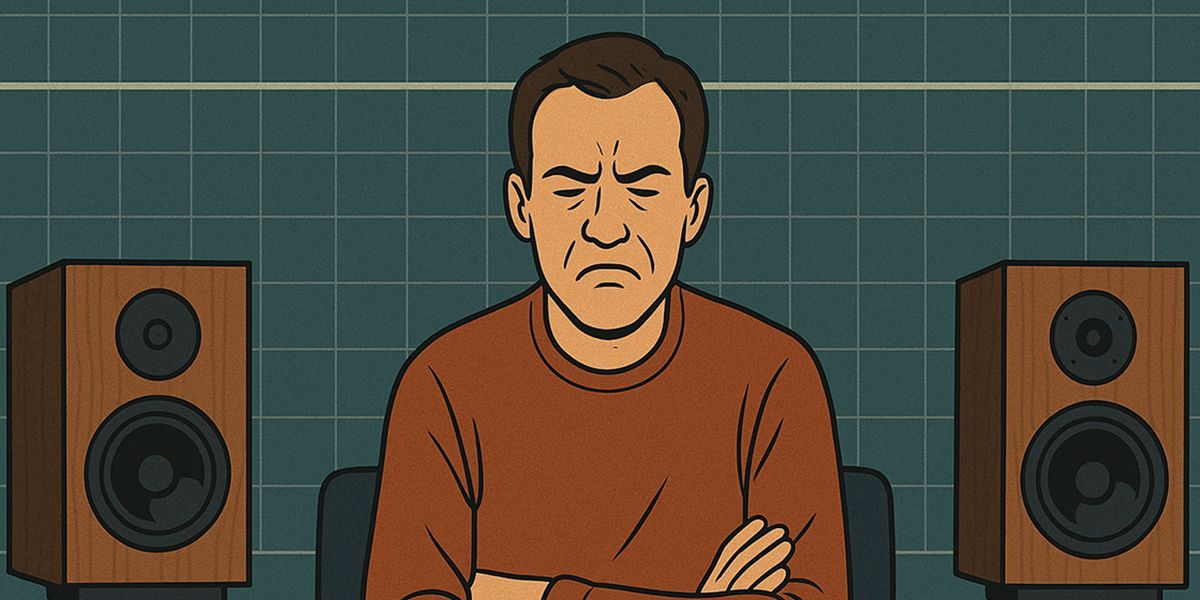AUDIO ORIGAMI BLOG

The Measurement Myth
How graphs can kill engagement.
In the world of hi-fi, measurements are often treated like gospel. Designers chase perfect, pre-determined curves and vanishing distortion figures all in the name of technical purity. It looks impressive on a graph, sure, but let's be honest: do we listen to graphs? Is that really what humans want to hear?
A perfectly flat response might satisfy an engineer's spreadsheet, but music doesn't live on paper; it lives in the spine-tingling lift of a vocal, the warmth of a cello, the shimmer of cymbals as they decay into silence. Music is emotion, not maths, and emotion doesn't measure well.
No measuring tool, not an analyser, not a microphone, not a computer, hears like a human. We're wildly complex biological filters. Our brains interpret, adjust, and emotionally react to music in ways no sensor can replicate. A microphone captures pressure changes in air; your ears and brain turn those same vibrations into goosebumps, memories, and movement. No instrument on Earth measures that.
Every pair of ears is unique. Your hearing changes with age, room acoustics, even mood. What you perceive as rich and full, someone else might call soft or rolled off. That's why you should be the measuring tool. Your ears, your room, your preferences. They are the only reference that really matters.
If every manufacturer keeps pushing towards perfect linearity, we'll end up in a world where everything sounds the same... technically flawless and emotionally hollow. Many of these "perfect" systems are clinical, even sterile. They tick all the boxes but never quite stir the soul. It's like comparing a chart depicting a fire's heat release to the cosy warmth of the real thing.
Take valve amps, for instance. On paper, they're dinosaurs; noisy, inefficient, full of distortion. Yet they remain some of the most cherished designs in hi-fi history. Why? Because they make music sound alive. Their distortion isn't chaos; it's character. Those second-order harmonics give body and bloom to the midrange, the part of music where most emotion lives. It's not the accuracy we love about them; it's the feel.
The same truth applies to BBC-style LS3/5a speakers. If you judged them by measurement alone, you'd probably dismiss them. Limited bass, modest efficiency, and not exactly ruler-flat. But when you actually listen, they vanish, voices float in the room, instruments sound human-sized, and everything just gels. That's not science... that's soul.
Voicing for warmth instead of measured neutrality is not a bad thing. Not at all! In fact, for long listening sessions, a slightly warmer, less "measured sterility" sound is easier to live with. It's more natural, more organic. Our brains aren't built to love perfection; they crave flow and tone. We're drawn to believability, not neutrality.
So, should manufacturers stop measuring their hi-fi gear? Of course not. Measurements matter, they’re essential for building reliable, well-engineered products. But let’s be clear: measurements don’t create great sound.
The next time you see a manufacturer boasting about specs and test results, take it with a pinch of salt. Let your ears make the final call, because buying a component on measurements alone is a big mistake. Always listen first.
Hi-fi should be about connection, not calibration. It should be about closing your eyes and feeling like the band's there, not wondering what your analyser says. The best systems don't just reproduce sound, they communicate it, they remind you why you fell in love with music in the first place. So the next time you're on the hunt for a new component, don't let the measurements get in the way of the music.

